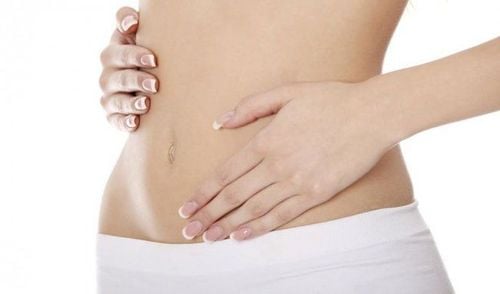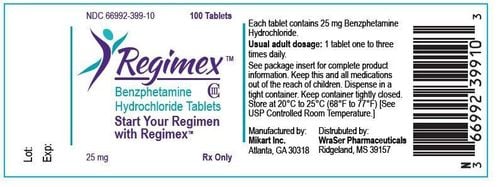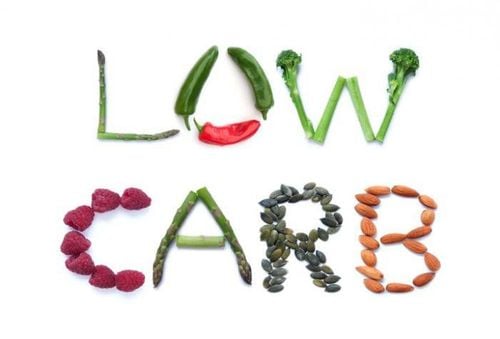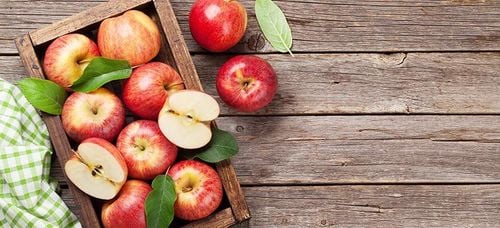This is an automatically translated article.
High blood pressure affects more than one billion people worldwide, and the number is growing. In fact, the number of people with high blood pressure has doubled in the past 40 years. This is a serious health problem, as high blood pressure is associated with a higher risk of conditions such as heart disease, kidney failure, and stroke. This article looks at the DASH diet, which is designed to fight high blood pressure and reduce your risk of heart disease.1. What is the DASH diet?
The Dietary Approach to Stop Hypertension, or DASH, is a recommended diet for people who want to prevent or treat high blood pressure and thereby reduce their risk of heart disease. The DASH diet focuses on fruits, vegetables, whole grains, and lean meats. The diet came into being after researchers found that high blood pressure readings were much less common in people following plant-based diets, such as vegetarians and vegans.That's why the DASH diet focuses heavily on fruits and vegetables while containing some lean protein sources like chicken, fish, and beans. Diet low in red meat, salt, sugar and fat. Scientists believe that one of the main reasons people with high blood pressure can benefit from this diet is that it helps reduce excess salt in the body.
The DASH Diet regularly recommends that users consume no more than 1 teaspoon (2,300 mg) of table salt per day, in line with most national food agency guidelines around the world. .
2. Health benefits
2.1 Lowering blood pressure Blood pressure is a measure of the force exerted on blood vessels and organs in the body when blood is transported throughout the body, blood pressure is calculated by two indicators:Systolic blood pressure : Pressure in the blood vessels when the heart beats.
Diastolic pressure: The pressure in the blood vessels between heartbeats, when the heart is at rest.
Normal blood pressure for an adult is a systolic pressure of less than 120 mmHg and a diastolic pressure of less than 80 mmHg. This is usually written as systolic pressure above diastolic pressure, for example: 120/80.
People with a blood pressure reading of 140/90 are considered to have high blood pressure.
The DASH diet has the potential to lower blood pressure in both healthy and hypertensive individuals.
In studies, people following the DASH diet still had low blood pressure even when they didn't lose weight or limit their salt intake.
However, when salt intake is restricted, the DASH diet helps reduce blood pressure even more. The greatest reductions in blood pressure were seen in those with the lowest salt consumption. Furthermore, the low-salt DASH diet had the most dramatic results in people who already had high blood pressure, which reduced systolic blood pressure by an average of 12 mmHg and diastolic blood pressure by 5 mmHg.
In people with normal blood pressure, DASH reduces systolic blood pressure by 4 mmHg and diastolic blood pressure by 2 mmHg. This is in full agreement with other studies that have revealed that limiting salt intake can lower blood pressure, especially in people with high blood pressure.
However, lowering blood pressure does not always reduce the risk of heart disease
2.2 Weight loss If the user has been diagnosed with high blood pressure, it is most likely advised to lose weight as well. This is because the higher the weight, the higher the blood pressure. In addition, weight loss has been shown to have an effect on lowering blood pressure.
Some studies show that some people can lose weight with the DASH diet.
This result may be because the DASH diet cuts out a lot of foods high in fat and sugar, which are known risk factors for overweight and obesity.
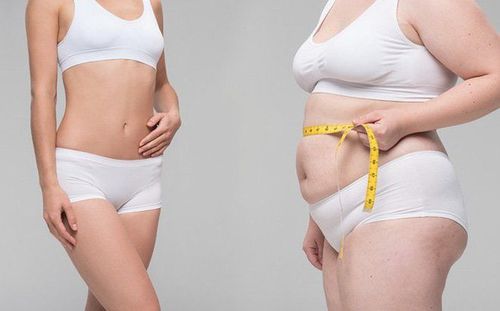
Một số nghiên cứu cho thấy một số người có thể giảm cân bằng chế độ ăn DASH
3. Does DASH work?
While studies of the DASH diet determined that the greatest reductions in blood pressure occurred in people with the lowest salt intake, the benefits of salt restriction on health and longevity were unclear.For people with high blood pressure, reducing salt intake significantly affects blood pressure readings. However, in people with normal blood pressure, the effect of reducing salt intake on blood pressure readings is much smaller.
4. A salt-restricted diet can cause negative reactions
Eating too little salt has been linked to health problems, such as an increased risk of heart disease, insulin resistance, and water retention.On the DASH diet, users are advised to eat no more than 3/4 teaspoon (1,500 mg) of table salt per day.
In fact, a recent review found no link between salt intake and the risk of dying from heart disease, despite the fact that reducing salt intake can help lower blood pressure.
However, since most users today are eating too much salt, reducing salt intake from a very high 2 teaspoons 10 to 12 grams per day to 1 teaspoon (5 to 6 grams) every day can be beneficial. This goal can be easily achieved by reducing the amount of processed foods in the diet and eating mostly whole foods.
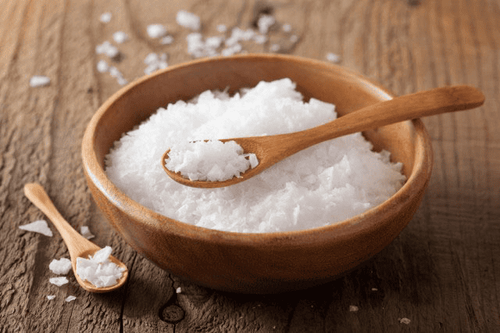
Trong chế độ ăn DASH, người dùng được khuyến cáo không nên ăn không quá 3/4 muỗng cà phê muối mỗi ngày
5. Foods in the DASH . Diet
The DASH diet does not list specific foods to eat. Instead, recommend specific servings of different food groups.The number of servings that can be eaten depends on the number of calories each person consumes. Below is an example of servings in the food groups based on the 2,000-calorie-per-day DASH diet.
5.1 Whole grains 6-8 servings/day, including whole-wheat bread or whole-grain cereals, breakfast cereals, brown rice, bulgur, quinoa, and oatmeal.
Examples of a serving include:
1 slice whole grain bread 1 ounce (28 grams) dry whole grain 1/2 cup (95 grams) cooked rice, pasta or cereal 5.2 Green vegetables 4-5 servings/day
All vegetables are encouraged on the DASH diet.
Examples of a serving include:
1 cup (about 30 grams) of green, leafy vegetables like spinach or kale 1/2 cup (about 45 grams) of sliced vegetables, eaten raw or cooked, like cotton broccoli, carrots, squash or tomatoes 5.3 Fruit 4-5 servings/day
The DASH diet focuses on consuming a variety of fruits such as apples, pears, peaches, berries and tropical fruits like pineapple and mango.
Examples of a serving include:
1 medium apple 1/4 cup (50 grams) dried apricots 1/2 cup (30 grams) fresh, frozen or canned peaches 5.3 Milk and dairy products 2-3 servings/day
Dairy products in the DASH diet should be selected in a low-fat form. Examples include skim milk, cheese, and low-fat yogurt.
Examples of a serving include:
1 cup (240 ml) low-fat milk 1 cup (285 grams) low-fat yogurt 1.5 ounces (45 grams) low-fat cottage cheese
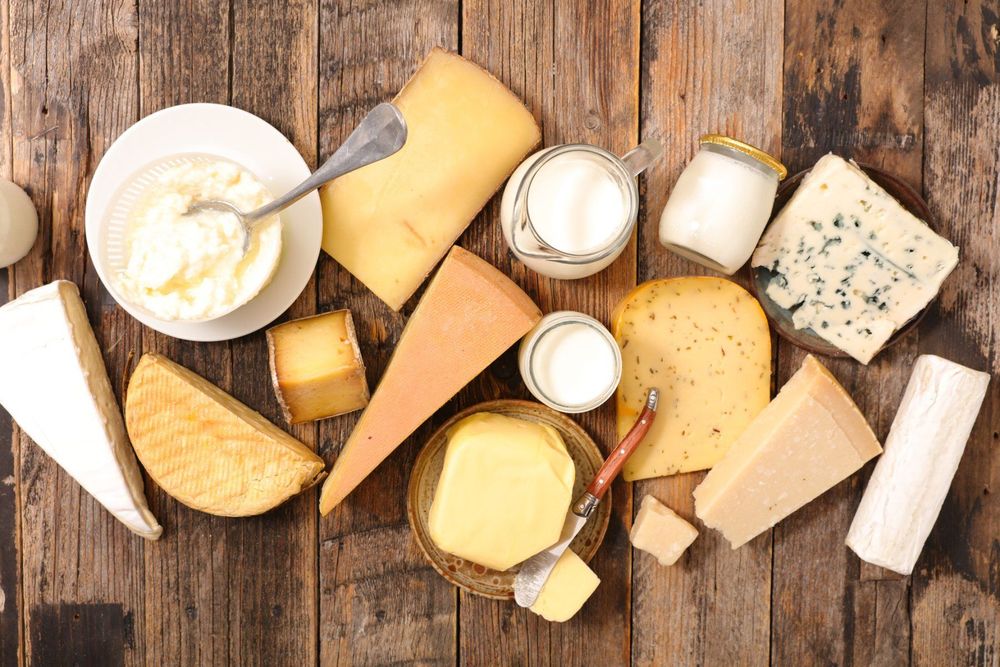
Các sản phẩm từ sữa trong chế độ ăn DASH nên được lựa chọn ở dạng ít chất béo
Users should choose lean meats and limit red meat servings to no more than once or twice a week.
Examples of a serving include:
1 ounce (28 grams) cooked meat, chicken or fish 1 egg 5.5 Nuts 4-5 servings/day
Nuts include almonds, peanuts, hazelnuts, walnuts, sunflower seeds, flaxseeds, kidney beans, lentils and peas.
Examples of a serving include:
1/3 cup (50 grams) nuts 2 tablespoons (40 grams) nut butter 2 tablespoons (16 grams) seeds 1/2 cup (40 grams) assorted cooked beans 5.6 Fats and oils 2-3 servings/day
The DASH Diet recommends that clients use vegetable oils over other oils. Include margarine and oils such as canola, corn, olive or safflower.
Examples of a serving include:
1 teaspoon (4.5 grams) softened margarine 1 teaspoon (5 ml) vegetable oil 1 tablespoon (15 grams) low-fat mayonnaise 2 tablespoons ( 30 ml) salad dressing 5.7 Sweets and added sugars less than 5 servings/week
Added sugars are kept to a minimum on the DASH diet, so users should limit their intake of candy, soda, and sugar. The DASH diet also limits unrefined sugar and alternative sugar sources, like agave nectar.
Examples of a serving include:
1 tablespoon (12.5 grams) granulated sugar 1 tablespoon (20 grams) jelly or jam 1 cup (240 ml) sweetened lemonade
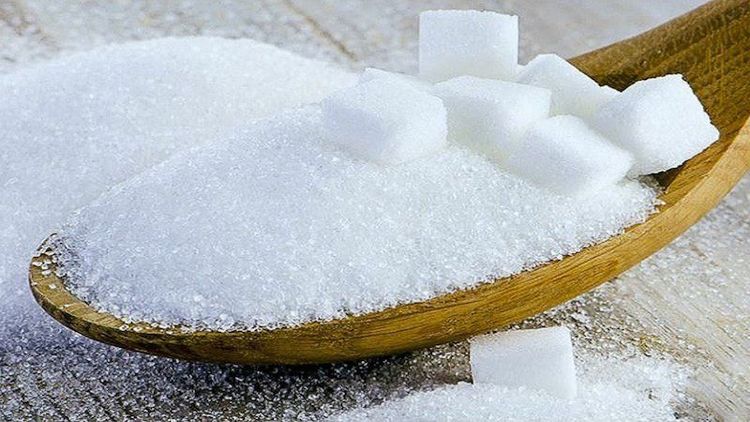
Người dùng nên hạn chế ăn kẹo, soda và đường
6. Example menu for a week
Monday Breakfast: 1 cup (90 grams) of oatmeal with 1 cup (240 ml) of skim milk, 1/2 cup (75 grams) of blueberries, and 1/2 cup (120 ml) of fresh orange juice. Snack: 1 medium apple and 1 cup (285 grams) of low-fat yogurt. Lunch: Tuna and mayonnaise sandwich made with 2 slices of whole-grain bread, 1 tablespoon (15 grams) low-fat mayonnaise, 1.5 cups (113 grams) green salad, and 3 ounces (80 grams) of fish canned tuna. Snack: 1 medium banana. Dinner: 3 ounces (85 grams) of lean chicken breast cooked with 1 teaspoon (5 ml) of vegetable oil with 1/2 cup (75 grams) each of broccoli and carrots. Serve with 1 cup (190 grams) of brown rice. Tuesday Breakfast: 2 slices whole-wheat bread with 1 teaspoon (4.5 grams) margarine, 1 tablespoon (20 grams) jelly or jam, 1/2 cup (120 ml) fresh orange juice and 1 medium apple. Snack: 1 medium banana. Lunch: 3 ounces (85 grams) of lean chicken breast with 2 cups (150 grams) of green salad, 1.5 ounces (45 grams) of low-fat cheese, and 1 cup (190 grams) of brown rice. Snack: 1/2 cup (30 grams) canned peaches and 1 cup (285 grams) low-fat yogurt. Dinner: 3 ounces (85 grams) of salmon cooked in 1 teaspoon (5 milliliters) of vegetable oil with 1 cup (300 grams) of boiled potatoes and 1.5 cups (225 grams) of boiled vegetables. Wednesday Breakfast: 1 cup (90 grams) of oatmeal with 1 cup (240 ml) of skim milk and 1/2 cup (75 grams) of blueberries. 1/2 cup (120 ml) fresh orange juice. Snack: 1 medium orange. Lunch: 2 slices whole-wheat bread, 3 ounces (85 grams) lean chicken, 1.5 ounces (45 grams) low-fat cheese, 1/2 cup (38 grams) green salad, and 1/2 cup (38 grams) grams) of cherry tomatoes. Snack: 4 whole-grain crackers with 1.5 ounces (45 grams) of cheese and 1/2 cup (75 grams) of canned pineapple. Dinner: 6 ounces (170 grams) of cod fillet, 1 cup (200 grams) of mashed potatoes, 1/2 cup (75 grams) of chickpeas, and 1/2 cup (75 grams) of broccoli. Thursday Breakfast: 1 cup (90 grams) of oatmeal with 1 cup (240 ml) of skim milk and 1/2 cup (75 grams) of raspberries. 1/2 cup (120 ml) fresh orange juice. Snack: 1 medium banana. Lunch: Salad made with 4.5 ounces (130 grams) of grilled tuna, 1 hard-boiled egg, 2 cups (152 grams) of green salad, 1/2 cup (38 grams) of cherry tomatoes. Snack: 1/2 cup (30 grams) of canned pears and 1 cup (285 grams) of low-fat yogurt. Dinner: 3 ounces (85 grams) pork fillet with 1 cup (150 grams) of mixed vegetables and 1 cup (190 grams) brown rice. Friday Breakfast: 2 hard-boiled eggs, 2 slices turkey bacon with 1/2 cup (38 grams) cherry tomatoes, 1/2 cup (80 grams) baked beans and 2 slices whole-wheat toast, extra 1 /2 cup (120 ml) fresh orange juice. Snack: 1 medium apple. Lunch: 2 slices whole-wheat bread, 1 tablespoon low-fat mayonnaise, 1.5 ounces (45 grams) low-fat cheese, 1/2 cup (38 grams) greens, and 1/2 cup (38 grams) Cherry tomato. Snack: 1 cup fruit salad. Dinner: Spaghetti and meatballs made with 1 cup (190 grams) of spaghetti and 4 ounces (115 grams) of minced turkey. 1/2 cup (75 grams) of green beans for serving. Saturday Breakfast: 2 slices whole-wheat bread with 2 tablespoons (40 grams) peanut butter, 1 medium banana, 2 tablespoons (16 grams) mixed nuts and 1/2 cup (120 ml) orange juice fresh . Snack: 1 medium apple. Lunch: 3 ounces (85 grams) of grilled chicken, 1 cup (150 grams) of grilled vegetables, and 1 cup (190 grams) of green salad. Snack: 1/2 cup (30 grams) of mixed berries and 1 cup (285 grams) of low-fat yogurt. Dinner: 3 ounces (85 grams) of steak and 1 cup (150 grams) of greens with 1 cup (190 grams) of brown rice, 1/2 cup (40 grams) of lentils, and 1.5 ounces (45 grams) of cheese low fat apricot. Dessert: Low-fat chocolate pudding. Sunday Breakfast: 1 cup (90 grams) of oatmeal with 1 cup (240 ml) of skim milk, 1/2 cup (75 grams) of blueberries, and 1/2 cup (120 ml) of fresh orange juice. Snack: 1 medium pear. Lunch: Chicken salad with 3 ounces (85 grams) lean chicken breast, 1 tablespoon low-fat mayonnaise, 2 cups (150 grams) green salad, 1/2 cup (75 grams) cherry tomatoes, 1/2 tablespoon broth (4 tablespoons) grams) of seeds and 4 whole-grain crackers. Snack: 1 banana and 1/2 cup (70 grams) of almonds. Dinner: 3 ounces roast beef with 1 cup (150 grams) boiled potatoes, 1/2 cup (75 grams) broccoli, and 1/2 cup (75 grams) green beans.7. Ways to get used to the DASH . diet

Chế độ DASH khuyên người dùng nên dùng các loại đồ uống ít calo như nước, trà và cà phê
Eat lots of vegetables and fruits . Swap refined grains for whole grains. Choose fat-free or low-fat dairy products. Choose lean protein sources like fish, poultry, and beans. Use vegetable oil. Limit your intake of foods high in sugar, like soda and candy. Limit your intake of foods high in saturated fat like fatty meats, full-fat dairy, and oils like coconut and palm oil. Outside of measured servings of fresh fruit juices, the diet recommends low-calorie beverages like water, tea, and coffee.
Please dial HOTLINE for more information or register for an appointment HERE. Download MyVinmec app to make appointments faster and to manage your bookings easily.
Reference article: Healthline.com



